1. Remember, y'all, it’s all about the prep. Take away the stress
by doing the prep the night or day before. You'll look like a star.
Paula Deen
Paula’s Best Dishes
2. The smaller the item, the higher the baking temperature. For
example, I bake mini chocolate chip-toffee cookies at 500 degrees F for
only 4 minutes. Perfect end result.
Jim Lahey
Co. and Sullivan Street Bakery, New York City
3. Store spices in a cool, dark place, not above your stove.
Humidity, light and heat will cause herbs and spices to lose their
flavor.
Rick Tramonto
Tramonto's Steak & Seafood, Osteria di Tramonto and RT Lounge, Wheeling, IL
4. Use a coarse microplane to shave vegetables into salads or
vinaigrettes. You can create an orange-fennel dressing by adding grated
fennel and orange zest to a simple vinaigrette.
Paul Kahan
Avec, Big Star, Blackbird and The Publican, Chicago
5. Always make stock in a large quantity and freeze it in plastic
bags. That way, when you want to make a nice soup or boil veggies, you
can simply pull the bag out of the freezer.
Charlie Trotter
Charlie Trotter's, Chicago
6. If you're cooking for someone important — whether it's your boss
or a date — never try a new recipe and a new ingredient at the same
time.
Marcus Samuelsson
Red Rooster, New York City
7. Cook pasta 1 minute less than the package instructions and cook it the rest of the way in the pan with sauce.
Mario Batali
Iron Chef America
8. After making eggs sunny-side up, deglaze the pan with sherry
vinegar, then drizzle the sauce on the eggs to add another dimension to
the dish.
Didier Elena
New York City
9. After working with garlic, rub your hands vigorously on your
stainless steel sink for 30 seconds before washing them. It will remove
the odor.
Gerard Craft
Niche and Taste, St. Louis
10. Brine, baby, brine! Ya gotta brine that poultry to really give it the super flavor.
Guy Fieri
Diners, Drive-ins and Dives
11. Remember schmaltz? Your mom and grandmother probably used a lot
of it in their home cooking. Schmaltz, or chicken fat, has a great
flavor and richness; it has a deeper flavor than duck fat and can be
used on nearly everything. I also love poaching fish in it.
Tony Maws
Craigie On Main, Cambridge, MA
12. If you find you need more oil in the pan when sautéing, add it
in a stream along the edges of the pan so that by the time the oil
reaches the ingredient being cooked, it will be heated.
Anita Lo
Annisa, New York City
13. When you deep-fry, hold each piece of food with long tongs as
you add it to the oil. Hold it just below the oil's surface for five
seconds before releasing it. This will seal the exterior and stop it
from sticking to the pot or the other food.
Michael Psilakis
FishTag and Kefi, New York City
14. For rich, creamy dressings made healthy, substitute half the mayo with Greek-style yogurt.
Ellie Krieger
Healthy Appetite with Ellie Krieger
Ben Goldstein/Studio D, Hearst Communications inc., 2010
15. When chopping herbs, toss a little salt onto the cutting board; it will keep the herbs from flying around.
Joanne Chang
Flour Bakery & Cafe, Boston
16. To make a great sandwich, spread the mayonnaise from corner to
corner on the bread. People rush this step and just do a swoosh down the
middle. Every bite should be flavorful. Now that's a sandwich!
Roy Choi
Kogi BBQ and A-Frame, Los Angeles
17. If you keep it simple and buy ingredients at farmers' markets,
the food can pretty much take care of itself. Do as little as possible
to the food; consider leaving out an ingredient and relying on instinct.
Tony Mantuano
Spiaggia, Chicago
18. Always season meat and fish evenly; sprinkle salt and pepper as
though it's "snowing." This will avoid clumping or ending up with too
much seasoning in some areas and none in others.
Mary Dumont
Harvest, Cambridge, MA
19. For best results when you're baking, leave butter and eggs at room temperature overnight.
Ina Garten
Barefoot Contessa: Back to Basics
20. Homemade vinaigrettes have fewer ingredients and taste better
than bottled ones. No need to whisk them: Just put all the ingredients
in a sealed container and shake.
Bill Telepan
Telepan, New York City
Ben Goldstein/Studio D, Hearst Communications inc., 2010
21. For an easy weeknight meal, save and freeze leftover sauces
from previous meals in ice cube trays. The cubes can be reheated in a
sauté pan when you need a quick sauce.
David Burke
David Burke Townhouse, New York City
22. When making meatballs or meatloaf, you need to know how the mixture
tastes before you cook it. Make a little patty and fry it in a pan like a
mini hamburger. Then you can taste it and adjust the seasoning.
Isaac Becker
112 Eatery, Minneapolis
23. Instead of placing a chicken on a roasting rack, cut thick
slices of onion, put them in an oiled pan, then place the chicken on
top. The onion will absorb the chicken juices. After roasting, let the
chicken rest while you make a sauce with the onions by adding a little
stock or water to the pan and cooking it for about 3 minutes on high
heat.
Donald Link
Cochon and Herbsaint, New Orleans
24. Low and slow.
Pat Neely
Down Home with the Neelys
25. After cutting corn off the cob, use the back side of a knife
(not the blade side) to scrape the cob again to extract the sweet milk
left behind. This milk adds flavor and body to any corn dish.
Kerry Simon
Simon, Las Vegas
Lay the corn horizontally on a board, then cut off the kernels.
Run the back of your knife over the empty cob to extract the milk
26. Acidity, salt and horseradish bring out full flavors in food.
Michael Symon
Iron Chef America
27. Take the time to actually read recipes through before you begin.
John Besh
Author of My New Orleans
28. Organize yourself. Write a prep list and break that list down
into what may seem like ridiculously small parcels, like "grate cheese"
and "grind pepper" and "pull out plates." You will see that a "simple
meal" actually has more than 40 steps. If even 10 of those steps require
10 minutes each and another 10 of those steps take 5 minutes each,
you're going to need two and a half hours of prep time. (And that
doesn't include phone calls, bathroom breaks and changing the radio
station!) Write down the steps and then cross them off. It's very
satisfying!
Gabrielle Hamilton
Prune, New York City
29. Recipes are only a guideline, not the Bible. Feel comfortable
replacing ingredients with similar ingredients that you like. If you
like oregano but not thyme, use oregano.
Alex Seidel
Fruition, Denver
30. A braised or slow-roasted whole beef roast or pork shoulder can be made into several dishes and sandwiches all week.
Elizabeth Falkner
Corvo Bianco, New York City
31. Taste as you go!
Anne Burrell
Secrets of a Restaurant Chef
32. Anytime you are using raw onions in a salsa and you are not
going to eat that salsa in the next 20 minutes or so, be sure to rinse
the diced onions under cold running water first, then blot dry. This
will rid them of sulfurous gas that can ruin fresh salsa. It's really
important in guacamole, too.
Mark Miller
Coyote Cafe, Santa Fe, NM
33. Do not use oil in the water when boiling pasta: It will keep the sauce from sticking to the cooked pasta.
Missy Robbins
A Voce, New York City
Ben Goldstein/Studio D, Hearst Communications inc., 2010
34. For safety, put a wine cork on the tip of a knife before putting the knife in a drawer.
Giuseppe Tentori
Boka Restaurant & Bar, Chicago
35. When you’re going to sauté garlic, slice it rather than mincing it — it's less likely to burn that way.
Aarti Sequeira
Aarti Party
36. When you're browning meat, you should blot the surface dry with
a paper towel so the meat doesn't release moisture when it hits the hot
oil. Too much moisture makes the meat steam instead of sear, and you
will lose that rich brown crust.
Charlie Palmer
Charlie Palmer Group
37. To cut pancetta or bacon into lardons, put in the freezer for
15 minutes. This will firm up the meat and make it easier to cut.
Chris Cosentino
Chefs vs. City
38. A cast-iron pan is a valuable kitchen ally. It offers an even cooking surface and is a breeze to clean.
Linton Hopkins
Restaurant Eugene, Atlanta
39. Smash garlic cloves inside a resealable plastic bag with the
back of a knife. That way, your cutting board and knife won't smell.
Laurent Tourondel
Brasserie Ruhlmann, New York City
40. To get nice, crispy caramelization on roasted vegetables,
simulate the intense heat of an industrial oven: Bring your oven up as
hot as it goes, then put an empty roasting or sheet pan inside for 10 to
15 minutes. Toss the vegetables — try carrots or Brussels sprouts —
with olive oil, salt and pepper, and put them on the hot pan. This
method will give you the high heat you need to caramelize the sugars in
the vegetables quickly.
Naomi Pomeroy
Beast, Portland,
41. Invest in a bottle of high-quality olive oil. Just a small
drizzle can really bring out the flavor of pizza, mozzarella, pasta,
fish and meat.
Nancy Silverton
Osteria Mozza, Los Angeles
42. Marinating meat with citrus can give it a mealy texture. If you
like citrus, a little squeeze of lemon or lime is always a good way to
finish the dish instead.
Tim Love
Lonesome Dove Western Bistro, Fort Worth, TX
Jonathan Kantor, (c) Jonathan Kantor
43. Add cheese rinds to vegetable or meat broths for another dimension of flavor.
Paul Virant
Vie, Western Springs, IL
44. When seasoning a salad, use coarse sea salt mixed with a little
olive oil. It will stay crunchy when combined with the vinaigrette.
Paul Liebrandt
Corton, New York City
46. Rest, rest, rest! Always let your meat rest — especially off a hot grill!
Melissa d'Arabian
Ten Dollar Dinners
47. Plunge vegetables in ice water after blanching (boiling) them so they maintain a bright color.
Maria Hines
Tilth, Seattle
48. Invest in parchment paper for lining pans. It makes all of your
baked goods super easy to remove, and it makes cleanup a dream (no
butter-flour mixture or errant batter to scrape off).
Matt Lewis
Baked, Brooklyn and Charleston, SC
49. My grandfather taught me this tip: After you drain pasta, while
it's still hot, grate some fresh Parmesan on top before tossing it with
your sauce. This way, the sauce has something to stick to.
Giada De Laurentiis
Giada at Home
50. Don't overcrowd the pan when you're sautéing — it'll make your food steam instead.
Ryan Poli
Perennial, Chicago
51. When you roast a whole chicken, the breast always overcooks and
dries out because the legs have to cook longer. This is a really simple
way to keep a chicken breast moist: Separate the breast and the leg.
Season as you normally would and roast as you normally would, but remove
the breast sooner than the leg.
Tim Cushman
O Ya, Boston
52. Buy fruit at its peak at a farmers' market and freeze it in an airtight container so you can enjoy it year round.
Mindy Segal
Mindy's HotChocolate, Chicago
Jonathan Kantor, (c) Jonathan Kantor
53. Fresh basil keeps much better and longer at room temperature with the stems in water.
Elisabeth Prueitt
Tartine Bakery, San Francisco
54. Season all of your food from start to finish. Seasoning in
stages brings the most out of your ingredients and gives you the most
flavor.
Jose Garces
Iron Chef America
55. To cook a steak, I always start by cooking it on its side,
where there is a rim of fat on its narrow edge. I render it down so
there's good, flavorful fat in the pan for the rest of the cooking.
Alain Ducasse
Benoit, New York City
Choose a steak with a layer of fat on one side, such as ribeye or sirloin.
Put the steak fat-side down in a hot pan, holding it with tongs.
Once the fat is rendered, lay the steak flat in the pan and cook on both sides.
56. Taste what you make before you serve it. I'm amazed that people
will follow a recipe but not taste the dish to see if it needs more
salt, pepper or spices.
Brad Farmerie
Public and Saxon+Parole, New York City
57. Season fish simply and cook it with respect. The flavor of the
fish is what you want. When it comes off the grill or out of the oven or
pan, finish it with a little squeeze of fresh lemon juice. Always.
There is just something about lemon and fish that is heavenly.
Rick Moonen
RM Seafood, Las Vegas
Jason Reekie, Jason Reekie
58. If you're cooking cauliflower, add a bit of milk to the water
with salt to keep the cauliflower bright white. Shock it in cold water
to stop the cooking and then serve.
Michael White
Marea, Osteria Morini and Ai Fiori, New York City
59. When grinding your own beef for burgers, grind in some bacon.
Sean Brock
McCrady's, Charleston, SC
60. Don't go to the store with a shopping list. Go to the store, see what ingredients look good and then make your list.
Alex Guarnaschelli
Alex’s Day Off
61. When making mashed potatoes, after you drain the potatoes,
return them to the hot pan, cover tightly and let steam for 5 minutes.
This allows the potatoes to dry out so they'll mash to a beautiful
texture and soak up the butter and cream more easily.
Wolfgang Puck
Spago, Los Angeles
62. If you want to make a proper Louisiana-style roux that's
chocolate in color and rich in flavor, remember slow and low is the way
to go.
Emeril Lagasse
Fresh Food Fast
63. For better-tasting asparagus, cure the stalks: Peel them, roll
in equal parts sugar and salt, and let them sit for 10 minutes, then
rinse off and prepare as desired.
Shea Gallante
Ciano, New York City
64. When you grill, pull your steaks out of the refrigerator one hour ahead of time so they can come to room temperature.
Geoffrey Zakarian
The Lambs Club and The National, New York City
65. Always measure what you're baking. No shortcuts in pastry: It's a science.
Francois Payard
Francois Payard Bakery, New York City
66. When using fresh herbs such as cilantro or parsley, add whole
stems to salads and sandwiches, and chop and stir leaves into salsas and
guacamole.
Aarón Sánchez
Chefs vs. City
67. If you don't have time to brine your chicken, use this simple
trick: Heavily salt the chicken (inside and out) about an hour before
you cook it. Then pat it dry and roast. This ensures crispy skin and
juicy meat.
David Myers
Comme Ça, Los Angeles and Las Vegas
68. When made properly, risotto's richness comes from the starchy
rice and the stock. As the risotto cooks, stir it with a wooden spoon in
rhythmic movements that go across the bottom and around the sides of
the pan. The rice should constantly be bubbling, drinking up the liquid
as it cooks.
Suzanne Goin
Lucques and AOC, Los Angeles
Ben Goldstein/Studio D, Hearst Communications inc., 2010
69. Use a cake tester to test the doneness of fish, meat and
vegetables. It's my secret weapon — I use it in the kitchen to test
everything.
Daniel Humm
Eleven Madison Park, New York City
70. Serving cake:
1. Serve at room temperature.
2. Don't "pre-slice" cake more than 20 minutes in advance. It dries out too quickly.
3. You don't have to eat the fondant. It's really pretty, but if you don't want a mouthful of pure sugar, peel it off.
4. The best cake comes from Baltimore. Just sayin’.
Duff Goldman
Ace of Cakes
71. To optimize the juice you get from a lemon or lime, roll it
hard under your palm for a minute before juicing. (Or — never say I told
you this — microwave it for 10 to 15 seconds.)
Patricia Yeo
Lucky Duck, Boston
72. For perfect vegetable soup, start with diced carrots, onions,
peppers and tomatoes sautéed in oil or butter before you add any liquid.
This brings out the taste and caramelizes the sugars.
Shaun Hergatt
Juni, New York City
Ben Goldstein/Studio D, Hearst Communications inc., 2010
73. Have your mise en place ready: Do all of your cutting of vegetables and meat and make your sauces before you start cooking.
Richard Sandoval
Zengo, multiple locations
74. Try smoked fleur de sel: Use it sparingly to finish a dish and bring another layer of flavor.
Michael Schwartz
Michael's Genuine Food & Drink, Miami
76. Shoes off, music on, favorite beverage in hand — enjoy your time in the kitchen.
Claire Robinson
5 Ingredient Fix
77. Always buy the freshest garlic you can find; the fresher it is,
the sweeter it will be. The best garlic has firm tissue-like skin and
should not be bruised, sprouted, soft or shriveled. If you find cloves
that have green shoots, discard the shoots — they will only add
bitterness.
Todd English
The Plaza Food Hall by Todd English, New York City
78. Keep flavored vinegars near the stove so you won't always reach for the salt. Acid enhances flavor.
Art Smith
Table Fifty-Two, Chicago; Art and Soul, Washington, D.C.
79. Don't be too hard on yourself — mistakes make some of the best recipes! Keep it simple.
Sunny Anderson
Cooking for Real
80. Fry eggs the Spanish way: Get a good quantity of olive oil hot.
Before you add the egg, heat the spatula (if it's metal) in the oil
first. That way the egg won't stick to it. Add the egg and fry it
quickly, until it gets "puntillitas," or slightly browned edges.
José Andrés
Think Food Group
Heat a metal spatula in a skillet with hot olive oil.
Fry the eggs until browned around the edges; remove with the hot spatula.
81. Prolong the lifespan of greens by wrapping them loosely in a
damp paper towel and placing in a resealable plastic bag. That local
arugula will last about four days longer.
Hugh Acheson
Five & Ten, Athens, GA
82. Want to know if your oil is hot enough for frying? Here’s a
tip: Stick a wooden skewer or spoon in the oil. If bubbles form around
the wood, then you are good to go.
Aaron McCargo, Jr.
Big Daddy’s House
Ben Goldstein/Studio D, Hearst Communications inc., 2010
83. When a recipe calls for zest, instead of grating it into a
separate container or onto parchment paper, hold the zester over the
mixing bowl and zest directly onto the butter or cream. The aromatic
citrus oils that are sprayed into the bowl will give the dessert a zesty
finish.
Pichet Ong
Spot Dessert Bar, New York City
84. Use good oil when cooking. Smell and taste it: If it doesn't taste good alone, it won't taste good in your food.
Michelle Bernstein
Michy's, Miami
85. Cook with other people who want to learn or who know how to cook.
Laurent Gras
New York City
87. Make sure the handle of your sauté pan is turned away from you
so you don't hit it and knock it off the stove. It happens all the time.
Jonathan Waxman
Barbuto, New York City
88. Don't dress the salad when having a big party. Leave it on the
side and let the people do it themselves. I've had too many soggy salads
because of this.
Marc Forgione
Iron Chef America
89. For crispy fish skin, rest the fish on paper towels skin-side
down for a few minutes before cooking (the towels absorb moisture). Then
sauté skin-side down over medium heat in oil and butter. Flip over for
the last few minutes of cooking.
Govind Armstrong
8 oz. Burger Bar, Los Angeles and Miami
90. When cooking eggplant, I like to use the long, skinny, purple
Japanese kind because you don't have to salt it to pull out the bitter
liquid like you do with the larger Italian variety.
Andrew Carmellini
Locanda Verde and The Dutch, New York City
91. Caramelize onions very quickly by cooking them in a dry
nonstick sauté pan over medium-high heat. They will caramelize
beautifully in a lot less time than with traditional methods.
Michael Mina
Bourbon Steak and Michael Mina restaurants, multiple locations
92. To help keep an onion together while dicing, do not remove the root.
Jean-Robert de Cavel
Jean-Robert's Table, Cincinnati
Slice off the pointy stem, then cut the onion in half through the root; peel.
Put each half cut-side down; make horizontal cuts parallel to the board.
Make vertical cuts, starting close to the root end; do not slice through the root.
Holding the root end, slice across the vertical cuts; the diced onion will fall away.
93. Whenever you cook pasta, remove some of the pasta-cooking water
(about 1/4 or 1/3 cup) just before draining. When you add the sauce of
your choice to the pasta, add a little of the cooking liquid. This helps
sauce to amalgamate; the starch in the water adds body and a kind of
creaminess. An old Italian friend of mine instructed me in this
finishing touch early on, and I would never, ever leave it out. It makes
all the difference.
Nigella Lawson
Nigella Kitchen
94. Making the best ceviche is simple: Use freshly squeezed lime juice and glistening fresh fish.
Douglas Rodriguez
Alma de Cuba, Philadelphia
95. When making caramel, use a nonstick pot. That way, when you
pour the mixture out, there is no waste, and cleaning the pot is a
breeze.
Jehangir Mehta
Mehtaphor and Graffiti, New York City
96. Don't be afraid to ask the butcher or fishmonger to see the
products up close and to smell for freshness. Fish should never smell
fishy.
Eric Ripert
Le Bernardin, New York City
97. Always start with a smokin' hot pan!
Cat Cora
Iron Chef America
98. When baking cookies, be sure your dough is thoroughly chilled
when it goes on your baking pan. This will allow the leavening
ingredients to work before the butter flattens out and your cookies lose
their textural distinctions.
Norman Van Aken
Norman's, Orlando, FL
99. My general advice to home cooks is that if you think you have added enough salt, double it.
Grant Achatz
Alinea and Aviary, Chicago
100. Reduce the heat of chiles by removing the seeds. My method is
making four straight cuts down the sides. This will create four long
slivers, and the cluster of seeds will remain in the center of the
chile. The result will be less heat and more great flavor.
Dean Fearing
Fearing's, Dallas
Slice lengthwise along one side of the chile, keeping the stem and seedpod intact.
Turn the chile and slice off another side; repeat to remove the other two sides.
Once you have removed all the flesh, discard the stem and seeds.

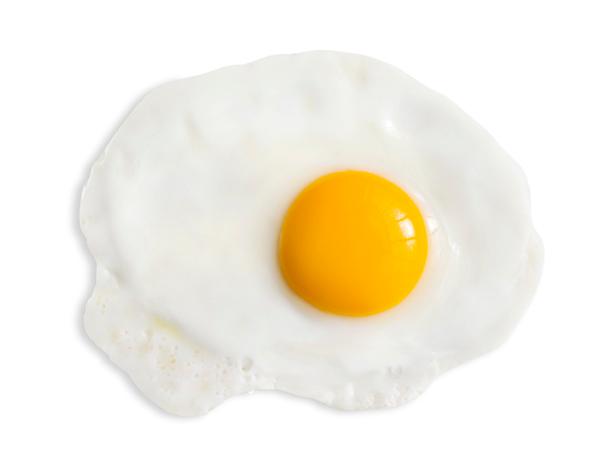


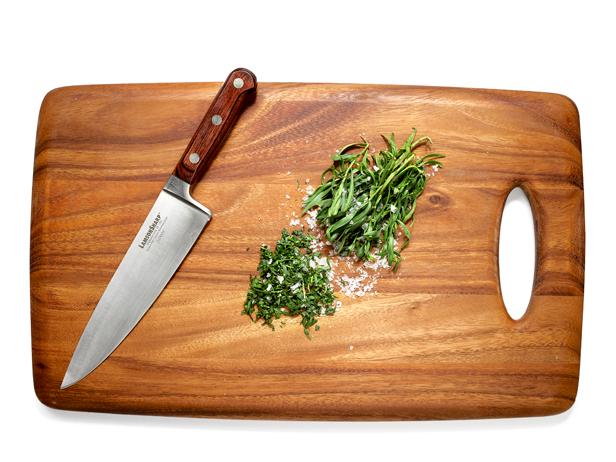

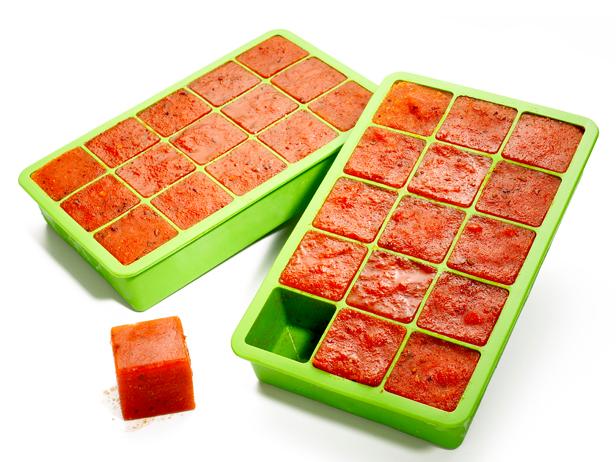

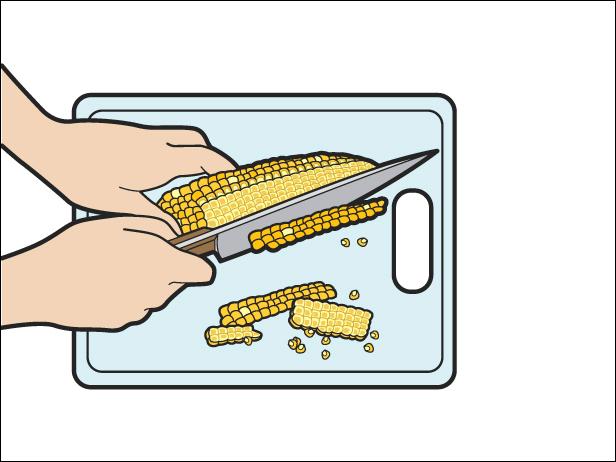

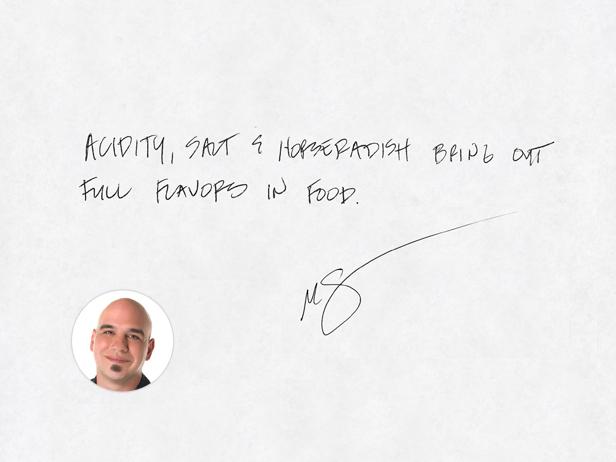


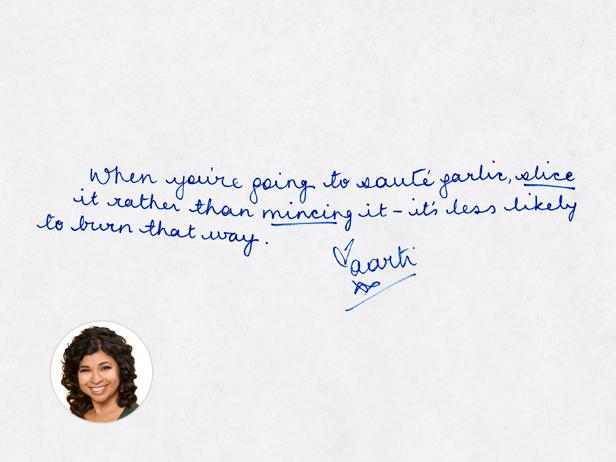
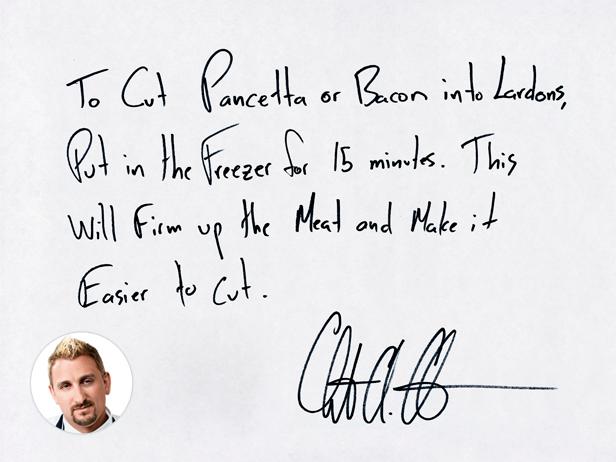
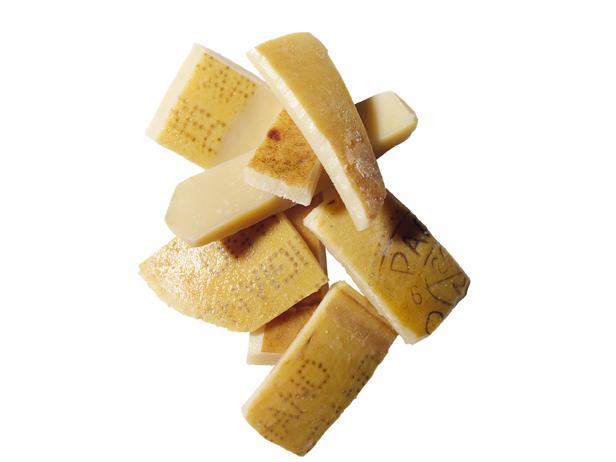
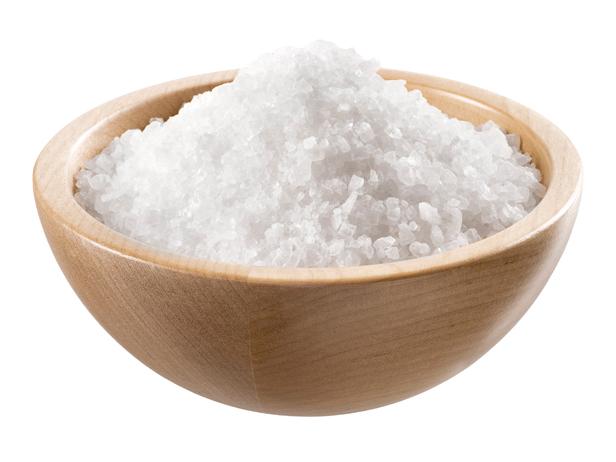
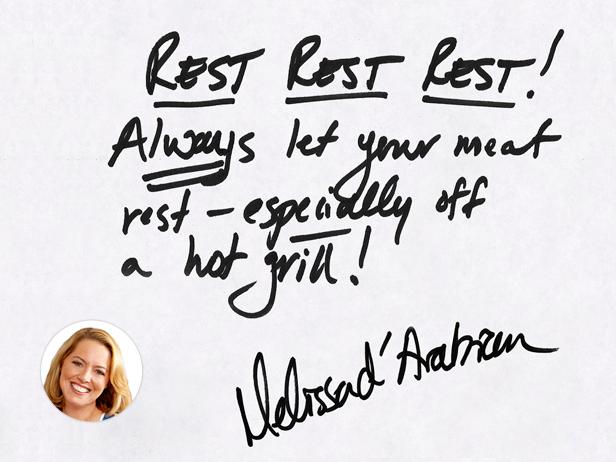

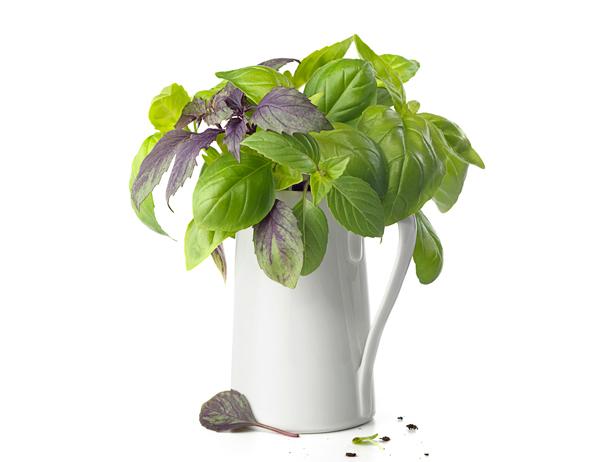


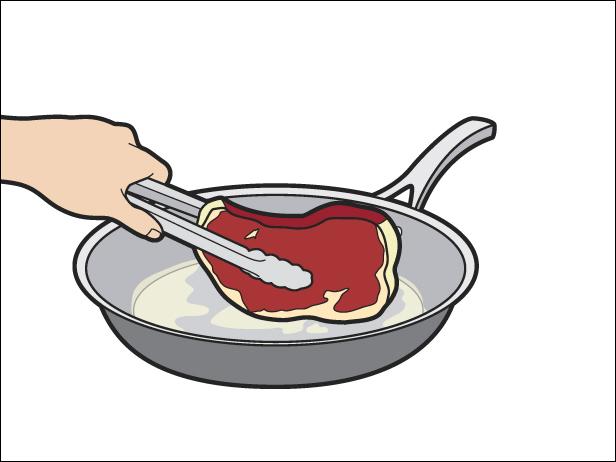
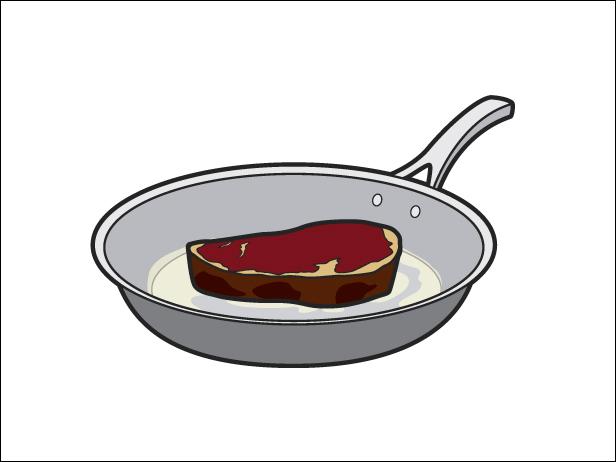
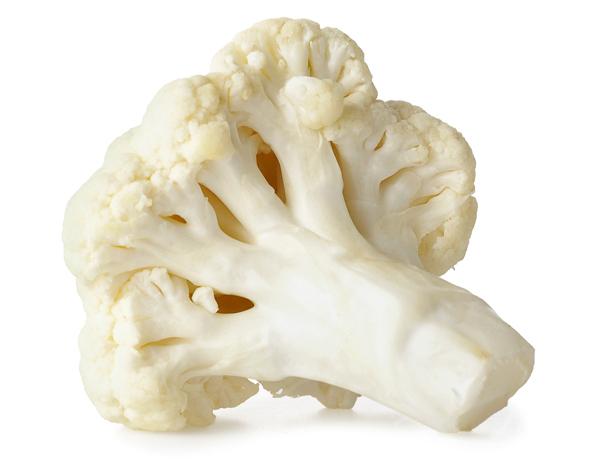




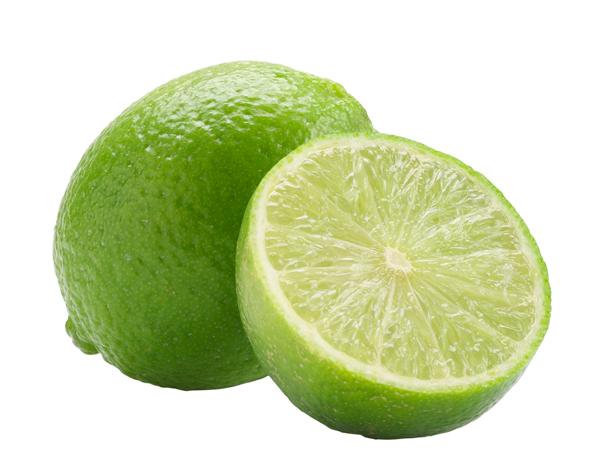
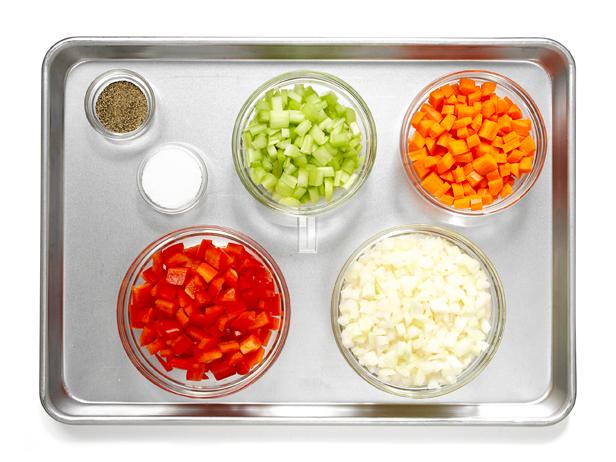





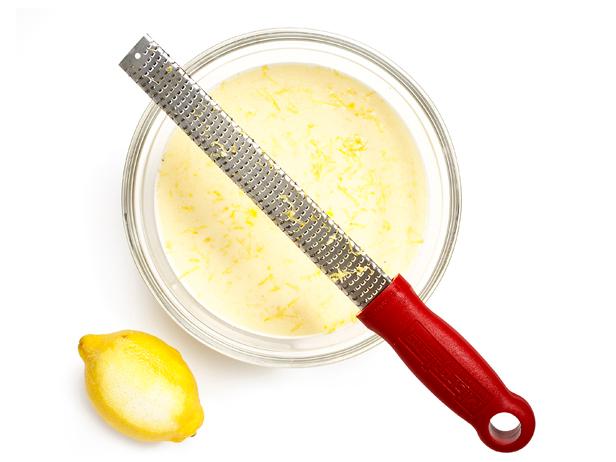


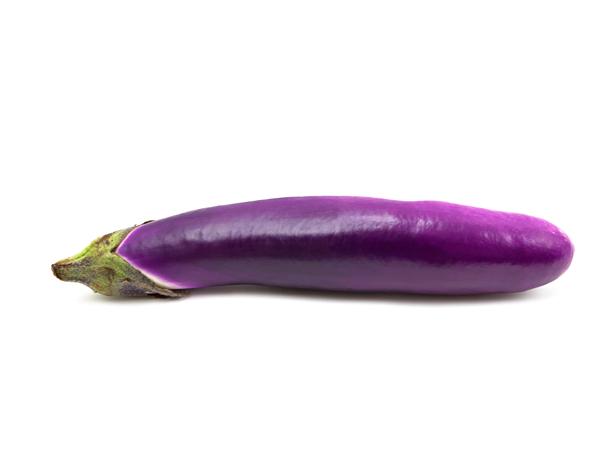



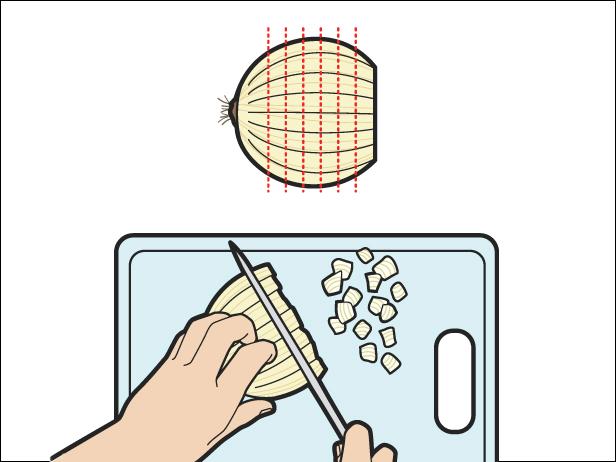

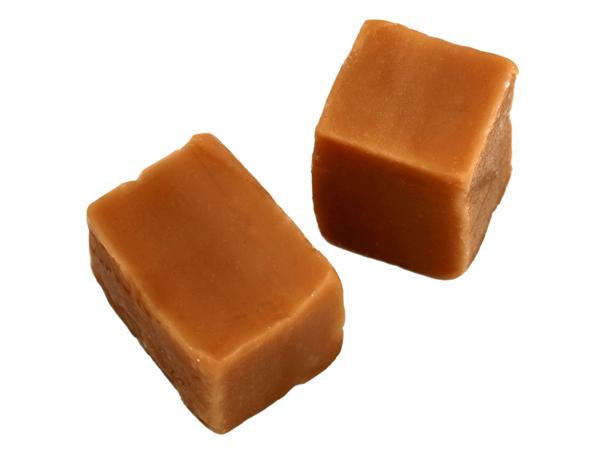
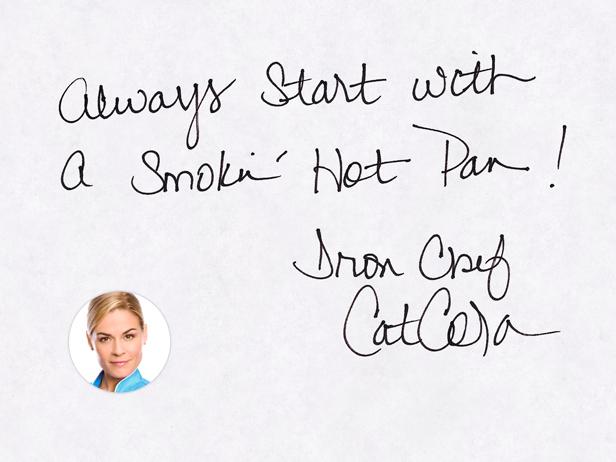
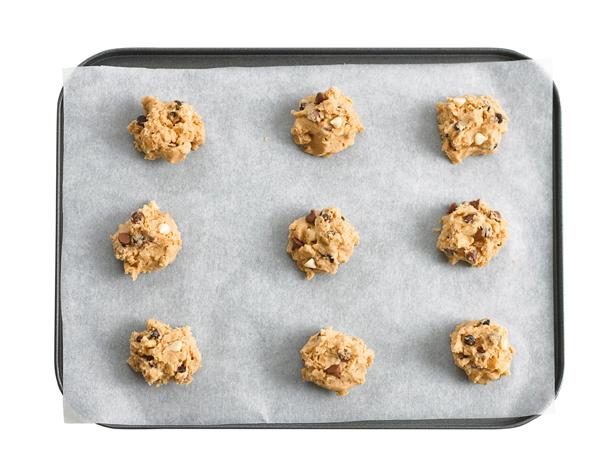
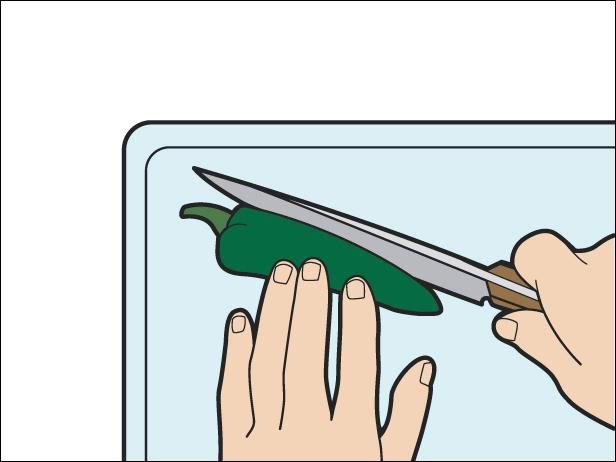




0 comments:
Post a Comment
Hi, please leave your comment.
Hai, sila tinggalkan komen anda.